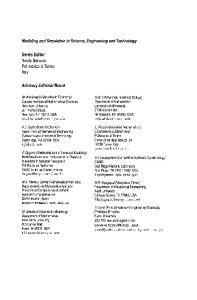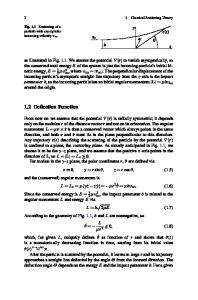Classical Kinetic Theory of Nucleation and Coarsening
The purpose of this chapter is to explain the classical kinetic theory of nucleation in a context simpler than polymer crystallization. Many theories start by assuming that polymer crystallization is an activate d process involving crossing of a free ener
- PDF / 27,306,423 Bytes
- 325 Pages / 439 x 666 pts Page_size
- 76 Downloads / 357 Views
MATHEMATICS IN INDUSTRY Editors Hans-Georg Bock Frank de Hoog Avner Friedman William Langford Helmut Neunzert William R. Pulleyblank Torgeir Rusten Anna-Karin Tornberg
THE EUROPEAN CONSORTIUM FOR MATHEMATICS IN INDUSTRY
SUBSERIES
Managing Editor Vincenzo Capasso Editors Robert Mattheij Helmut Neunzert Otmar Scherzer
E
C
M
I
Springer Berlin Heidelberg New York HongKong London Milan Paris Tokyo
Vincenzo Capasso Editor
Mathematical Modelling for Polymer Processing Polymerization) Crystallization) Manufacturing
With 90 Figures, 7 in Color
Springer
Editor Vincenzo Capasso MIRIAM - Milan Research Cent re for Industrial and Applied Mathematics and Department of Mathematics University of Milano Via C. Saldini 50 20133 Milano, Italy e-mail: [email protected]
Cataloging-in-Publieation Data applied for Bibliographie information published by Die Deutsche Bibliothek Die Deutsche Bibliothek lists this publieation in the Deutsche Nationalbibliografie; detailed bibliographie data is avaHable in the Internet at < http://dnb.ddb.de>.
Cover figure: A random tessellation generated by an experiment of polymer crystallization carried out at BASELL - G. Natta Research Centre in Ferrara, Haly.
Mathematics Subject Classification (2000): 34-XX, 3S-XX, 3SKxx, 3SRxx, 6o-XX, 60Kxx, 6oDoS, 62GXX, 70-XX, 74Exx, 8o-XX, 8oAxx, 92EXX ISBN 978-3-642-62810-8 DOI 10.1007/978-3-642-55771-2
ISBN 978-3-642-55771-2 (eBook)
This work is subjeet to copyright. All rights are reserved, whether the whole or part of the material is eoneerned, specifieally the rights of reprinting, reuse of illustrations, reeitation, broade as ting, reproduction on microfilms Of in any other way, and storage in data banks. Duplication of this publieation or parts thereof is permitted only under the provisions of the German Copyright Law of September 9, 1965, in its eurrent version, and permission for use must always be obtained from Springer-Verlag. The rights of translation remain with Otto Moesehlin. Violations are liable for proseeution under the German Copyright Law.
http://www.springer.de © Springer- Verlag Berlin Heidelberg 2003
Originally published by Springer-Verlag Berlin Heidelberg New York in 2003 Softcover reprint of the hardcover] st edition 2003
The use of registered names, trademarks, ete. in this publieation does not imply, even in the absence of a specific statement, that such names are exempt from the relevant protective laws and regulations and therefore free for general use. Typeset by the authors using a Springer TEX maero-package Cover design: design & production GmbH, Heidelberg SPIN: 10757829 46/3142LK - 5 4 3 2 1 0 Printed on acid-free paper
Preface
Polymers are substances made of macromolecules formed by thousands of atoms organized in one (homopolymers) or more (copolymers) groups that repeat themselves to form linear or branched chains, or lattice structures. The concept of polymer traces back to the years 1920's and is one of the most significant ideas of last century. It has given great impulse to industry but also to f











